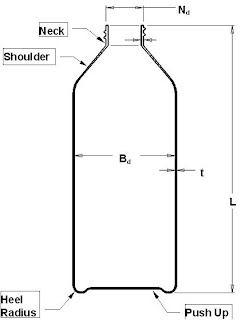PET drying
A fault with the dryer will lead to hydrolysis of the material in the barrel of the machine. This will cause lowered I.V. of the material. Lowered I.V. is the major cause of bad quality in preforms and bottles. More than 60% of all PET processing related faults can be traced back to the dryer.
Maintaining the dryer in optimum condition will allow the molding machine to perform at maximum efficiency and quality.
Check the basics!
Airflow - The most important parameter, there should be nothing causing a restriction in the process and regeneration air flow.
Temperature - Process Temperature should be in the region of 145~170ºC Depending on the resin supplier and the drying time. Also check the Regeneration Temperature which should be around 200~230ºC depending on the maker.
Time - Calculate (or measure) the time the material is in the hopper, this should be at least 3½ hours.
Dewpoint - Correct dewpoint may vary according to the manufacturer of the dryer, consult the maker's manual before assuming an error exists.
How Do I Do This?
Airflow - Most common problem is a blocked process filter, but also check blowers are operating correctly and the delivery hoses have not been squashed.
Temperature - Confirm process air temperature is correct on the display panel. The regeneration air temperature is not so easy to check since most regeneration controllers are hidden away in the electrical panel.
Time - If you know the capacity of the hopper in liters, you can calculate the PET quantity using a figure of 0.84kg/L as the bulk density. Compare this figure (kilograms of PET) against the current consumption of PET by the machine in kg/hr. If you are not sure, the safest method is to switch off the hopper loader and check the time necessary for the material to be consumed.
Dewpoint - Use a commercially available dewpoint meter to sample the air coming from the desiccant chamber. Typical vales may be anything between -20ºC and -50ºC. Check the manual for correct specification. In machines with more than one desiccant chamber, be sure to check all of them.
Check the correct function of all heaters on a regular basis using a clip-on ammeter. If one or more has broken, the others will be taking extra load.
Always check the calibration of instrumentation and thermocouples before assuming a problem exists
Maintaining the dryer in optimum condition will allow the molding machine to perform at maximum efficiency and quality.
Check the basics!
Airflow - The most important parameter, there should be nothing causing a restriction in the process and regeneration air flow.
Temperature - Process Temperature should be in the region of 145~170ºC Depending on the resin supplier and the drying time. Also check the Regeneration Temperature which should be around 200~230ºC depending on the maker.
Time - Calculate (or measure) the time the material is in the hopper, this should be at least 3½ hours.
Dewpoint - Correct dewpoint may vary according to the manufacturer of the dryer, consult the maker's manual before assuming an error exists.
How Do I Do This?
Airflow - Most common problem is a blocked process filter, but also check blowers are operating correctly and the delivery hoses have not been squashed.
Temperature - Confirm process air temperature is correct on the display panel. The regeneration air temperature is not so easy to check since most regeneration controllers are hidden away in the electrical panel.
Time - If you know the capacity of the hopper in liters, you can calculate the PET quantity using a figure of 0.84kg/L as the bulk density. Compare this figure (kilograms of PET) against the current consumption of PET by the machine in kg/hr. If you are not sure, the safest method is to switch off the hopper loader and check the time necessary for the material to be consumed.
Dewpoint - Use a commercially available dewpoint meter to sample the air coming from the desiccant chamber. Typical vales may be anything between -20ºC and -50ºC. Check the manual for correct specification. In machines with more than one desiccant chamber, be sure to check all of them.
Check the correct function of all heaters on a regular basis using a clip-on ammeter. If one or more has broken, the others will be taking extra load.
Always check the calibration of instrumentation and thermocouples before assuming a problem exists



Comments